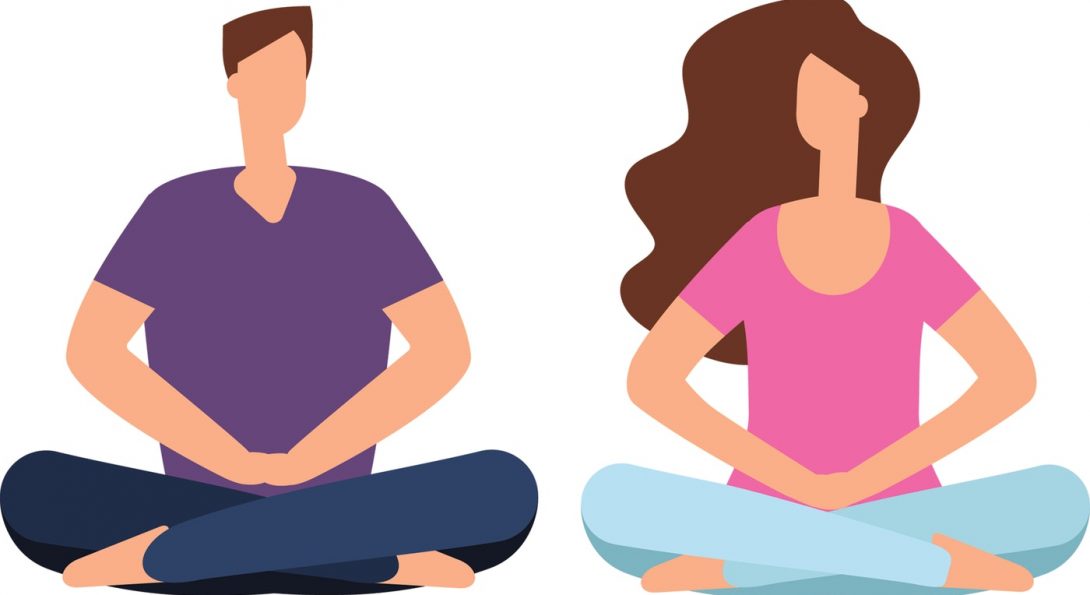12 Mindfulness Essential Practices in a Fast-Paced World

The modern world moves at such a breakneck speed that finding moments of solitude and quiet may seem like a luxury. The nonstop commotion might have negative effects on our physical health as well as our mental and emotional well-being. Here is when the Mindfulness Essential Practices comes into play. Being mindful is consciously paying attention to and accepting one’s experience in the here and now without judgment. In spite of the hectic nature of our contemporary world, it makes it possible for you to develop a feeling of serenity, clarity, and concentration via its use. When you feel anxious, overwhelmed, or detached from others and yourself, including mindfulness techniques into your everyday life may make a huge impact in how you experience these feelings.
We all think too much, seek too much, and desire too much in our fast-paced world, and in the process, we lose sight of the pleasure that comes from just being.
Why Practicing Mindfulness Is Necessary in a Fast-Paced World
The pace of life in today’s contemporary world may be frenetic, which can leave us feeling anxious and estranged from both ourselves and other people. Mindfulness training is important because it enables us to stop, take stock, and completely participate in the here and now.
In today’s fast-paced environment, cultivating a mindful awareness is essential for the following three reasons:
- To be able to create a haven of serenity inside oneself, even when the world around you seems to be in complete disarray; this is one of the many benefits of practicing mindfulness. It provides you with the skills to calm down, take a step back, and discover inner peace despite the continual demands and distractions.
- to experience less stress and anxiety: Feelings of tension and worry are all too prevalent in today’s society, particularly one that moves at such a rapid pace. The practice of mindfulness offers a means of controlling and alleviating unpleasant sensations. You may learn to examine your thoughts and feelings without passing judgment on them by engaging in mindful practice. This will enable you to react to stressful circumstances with more clarity and more resilience.
- Maintaining our concentration may be difficult given the number of tasks, deadlines, and alerts that compete for our attention. Improving our ability to concentrate will help us become more productive. The practice of Mindfulness Essential Practices helps teach your mind to be in the here and now and focused on the activity at hand. You may improve your productivity and efficiency in a demanding job or academic setting by honing this skill. This is true whether you are working or studying.
By implementing even the most basic Mindfulness Essential Practices exercises into our daily routines, we can train our brains to stop operating on autopilot and start making decisions that are in line with the things that are most important to us. You may experience a dramatic transformation in the way you connect to the world around you if you make an effort to take a few minutes during the day to halt, breathe, and root yourself in the here and now.
Mindfulness Essential Practices

Here are 12 practices that will help you stay present at the moment and navigate this digital era with greater awareness and balance.
Be Present
Learning to pay attention to the here and now in its entirety is the first step in developing mindfulness. It’s important to remember to check in with yourself periodically during the day. Take note of the feelings and sensations that emerge inside you, as well as the noises and sights around you, as well as the ideas.
Whether you’re working, doing the dishes, cleaning the home, or even just brushing your teeth, pay attention to everything you do and how you feel in the present now without passing judgment. This applies whether you’re doing something significant or not. You may create a better awareness and appreciation for the straightforward pleasures that life has to offer by engaging in activities that bring your attention back to the here and now, known as mindfulness.
Meditation
The powerful mindfulness practice of meditation can bring about a state of mental tranquility. Make it a point to meditate right after you get up, or schedule a certain period of the day to be used just for this purpose. Even just a few minutes may go a long way; the amount of time spent on it does not have to be significant. Investigate a variety of approaches to meditation and see which ones seem most natural to you.
Body Scan Meditation
The practice of body scan meditation consists of methodically bringing our attention to various regions of the body, being aware of any feelings or tension, and then releasing them in a mindful manner. The regular practice of meditation in its most basic form enables us to cultivate a stronger connection with our physical bodies and facilitates relaxation.
Loving Kindness Meditation
Kindness and compassion During meditation, we send positive energy and compassion to ourselves as well as to others around us. Even in our fast-paced world, we may cultivate a sense of connection and empathy by focusing on loving and compassionate thoughts toward ourselves and others, as well as toward ourselves.
Mindfulness Meditation
Mindfulness meditation is a practice of non-judgmentally observing our thoughts, emotions, and sensations as they arise. It helps us develop a sense of clarity and serenity, allowing us to respond to life’s challenges with greater wisdom and compassion.
Yoga

Have you ever been curious about the relationship between yoga and Mindfulness Essential Practices? Not only is yoga a kind of physical exercise, but it is also a holistic practice that helps you become more conscious in many other facets of your life. Not only does it make the body stronger, but it also helps one become more conscious and learn to relax. Practicing meditation or yoga on a daily basis may help decrease stress, increase flexibility and strength, and overall improve well-being. Find a yoga class in your area or investigate the many resources available online to learn about the various types of yoga that are available.
Kundalini Yoga
Through the use of physical postures, breathwork, chanting, and meditation, Kundalini Yoga brings latent energy to the surface. This powerful exercise brings your focus to the here and now, activates energy centers (chakras), and gives you access to your inner awareness, all of which work together to expand your consciousness and establish a connection with your higher self.
Asana Yoga
The physical postures and motions that are performed in yoga are the emphasis of Asana yoga, also known as Hatha yoga. It is a kind of yoga that emphasizes the alignment of the body, breath, and mind in order to foster awareness and well-being in its practitioners. It draws attention to the alignment of the body, breath, and mind, which is one of the reasons why it is such a popular option: the advantages of mindfulness are promoted via its practice.
Yin Yoga
With Yin Yoga, you’ll enjoy a gentle and passive practice where poses are held for an extended period. It targets deeper tissues, promoting flexibility and relaxation. You nurture your mindfulness skills, patience, and stillness by observing physical sensations, emotions, and thoughts that arise during long holds.
Breathing Exercises

When things become chaotic in life, it may be really good to take a few moments to concentrate on your breathing. Breathing exercises are simple but powerful practices that help you to connect with your breath and produce a feeling of peace and relaxation. They allow you to connect with your breath and allow you to connect with yourself.
Pranayama
The ancient art of yoga includes many techniques, one of which is called pranayama, which is the practice of regulating and controlling one’s breath. It helps to relax the mind, lessen the effects of stress, and improve concentration as well as body awareness. The “4-7-8” breath is a simple Pranayama practice that you might try out:
- Take a full breath in and count to four as you do so.
- Count to seven as you hold your breath.
- Slowly let out your breath for a count of eight.
- Iterate through these steps many times.
Guided Wim Hof Breathing
Extreme athlete Wim Hof is responsible for developing a method of breathing that is now known as the Wim Hof Method. It begins with slow, deliberate breathing and is then followed by an extended duration of holding one’s breath. This exercise has the potential to raise your energy levels, provide more clarity to your mind, and strengthen your immune system.
Mindful Shower
The majority of us go through the motions of our everyday routines, such as taking a shower, without giving it much attention. You can, however, transform your shower into a mindful experience by making a few simple tweaks. This will enable you to completely engage all of your senses, which in turn will help you feel more at ease and relaxed.
While you’re in the shower, pay attention to the feeling of the water flowing down your body, the sound of the shower, and all of the other senses. Take advantage of the chance to be completely present in the moment, and as the water gently washes away any tension or worry, allow yourself to be left feeling revitalized and rejuvenated.
Mindful Creativity
Developing one’s capacity for Mindfulness Essential Practices may be significantly aided by participating in a variety of artistic pursuits. Creating anything, whether it be a painting, a drawing, a piece of literature, or playing an instrument, enables you to be totally present in the moment and gives you access to your own inner expression.
Find a creative outlet that speaks to you and make it a regular part of your routine to spend time doing it. Let go of judgment and the need to be flawless, and instead focus on just enjoying the act of creating. Pay attention to the many feelings, forms, colors, noises, and textures that come up during the creative experience.
This not only encourages you to express yourself in a healthy way, but it also helps you relax, lower your stress levels, and form a closer connection with your inner self.

Mindful Eating
The practice of putting one’s whole focus and awareness to the activity of eating is referred to as “mindful eating,” and it is a kind of meditation. It’s very uncommon for us to eat while on the go or while multitasking during meals, both of which may lead to thoughtless eating and a disconnection from what our bodies need.
When you eat with Mindfulness Essential Practices, you take your time, savor each mouthful, and concentrate on the food’s flavor, texture, and scent rather than rushing through the experience. You develop an awareness of the signs that your body gives you when it is hungry and when it is full, which enables you to make deliberate decisions about the foods that you eat and the amount that you consume.
Mindful Walk
The practice of walking mindfully provides a chance to interact with one’s environment and establish a connection with the here and now. A mindful stroll is one in which you are encouraged to be completely present and alert to the sights, sounds, and feelings that are occurring around you, as opposed to speeding through your walk with your mind wandering as you go.
To begin, direct your attention to the sensation of your breath going in and out as well as the feeling of your feet making contact with the earth. Take some time to appreciate the splendor of your setting, whether it be the vibrant hues of nature or the vibrant metropolis. Give yourself permission to let go of your frantic thoughts and focus on being present in the moment.
Walking intentionally may help alleviate stress, boost mood, and promote general well-being, according to research conducted on the topic. Therefore, the next time you go on a stroll, give mindfulness meditation a go and observe how it transforms your experience.
Digital Detox
Because of the numerous alerts, emails, and social media updates that we get in this digital era, it may be difficult to detach from our devices and find periods of tranquility for ourselves.
Taking purposeful pauses away from screens and other forms of technology in order to make room for relaxation and rejuvenation is the key component of a digital detox. It involves shutting off your electronic gadgets, removing yourself from the continual flow of information, and giving yourself permission to be present in the world that does not include technology. Use this time to engage in activities that nourish your mind, body, and soul, such as reading a book, practicing a hobby, or spending quality time with loved ones.
Focus on one task at a time
In this fast-paced world of ours, multitasking has become the standard operating procedure. We often attempt to do numerous things at the same time in the mistaken belief that this would increase our overall productivity. Research has shown that attempting to multitask at the same time really decreases efficiency and raises stress levels.
Single-tasking refers to the practice of concentrating on one activity at a time, which enables you to devote your complete attention and energy to the activity that is now being performed. Eliminating distractions and fully immersing yourself in a single task will help you improve your ability to concentrate, as well as your productivity and efficiency.
Spend a time sorting out the order of your responsibilities, and then give each one of them your entire attention. You will be astounded by how much more you are capable of doing with an approach that is focused and thoughtful.
Journaling
Writing in a journal is an effective kind of Mindfulness Essential Practices that enables you to investigate your experiences, feelings, and ideas via the medium of writing. It offers a secure and confidential environment in which one may engage in self-expression and introspection.
Self-Reflection Journaling
Writing in a diary for the purpose of self-reflection requires you to engage in introspection and expand your awareness of who you are. Spend some time every day writing about your ideas, insights, and progress in personal development.
A Few Ideas:
- What are some of the things that tend to set off your temper?
- When I consider my life beyond this point, what do I worry about the most?
- What are the sensations and emotions that I am attempting to steer clear of?
- Who do I want to develop into myself?
- How can I show that I love myself?
Gratitude Journaling
The practice of keeping a notebook of thankfulness, on the other hand, is centered on the appreciation of the good parts of one’s life. To build an attitude of gratitude and satisfaction inside yourself, make a list of all the things—big and small—for which you are thankful.
A Few Ideas:
- Create a list of everything you can think of right now for which you are thankful.
- Make a list of everything about yourself that you are grateful for and put it in order.
- What is it about this day that always makes me smile?
- You should write about how glad you are for the rejection you received.
- Describe in writing a past experience for which you are very thankful.
Practice Gratitude
Gratitude is a strong but easy tool that may help you redirect your attention away from the things that are missing in your life and toward the things that you do have. The act of consciously recognizing and appreciating the many benefits, great experiences, and happy moments that surround you is what we mean when we talk about practicing gratitude.
An investigation on the effect that cultivating an attitude of thankfulness has on one’s mental health was carried out by Wood, Froh, and Geraghty (2010). The findings of the study showed that those who participated in thankfulness activities, such as maintaining gratitude notebooks or writing thank-you notes, reported substantial improvements in pleasant emotions, general life satisfaction, and overall psychological well-being. They also reported having less negative feelings, including despair and perceived stress, as a result. This research offers more evidence that cultivating an attitude of thankfulness has beneficial benefits on both one’s mental health and overall well-being.
Even in our fast-paced world, cultivating an attitude of gratitude has the potential to have a significant positive effect on one’s overall health and level of pleasure.
Read More: The Effective Impact of Nutrition on Brain Health and Cognitive Function 2023
Final Thoughts
Keep in mind that cultivating Mindfulness Essential Practices is an ongoing process as you begin on your journey. As you practice being in the here and now and letting go of things that distract you, remember to be patient and kind to yourself. It is not about reaching perfection so much as it is about setting out with the purpose of incorporating mindfulness into your daily life. It is focusing our attention to the here and now on purpose, without passing judgment on what we see there. Are you willing to stop what you’re doing every so often, take a few deep breaths, and focus on the here and now? You always get to decide what to do.
Read More: Marketing to Generation Z: Strategies for Reaching the New Digital Native 2023











